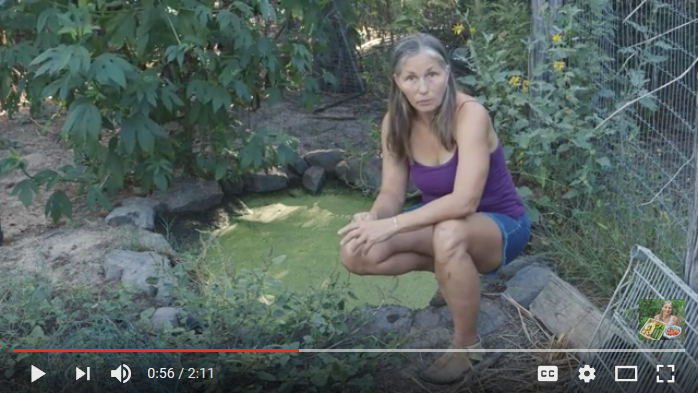Using Duckweed on the Homestead
If you search for information about duckweed on the internet, the vast majority of the information you’ll find will be about how to get rid of it. Common duckweed (Lemna minor) grows in still water in temperate climates around the globe. And this tiny plant grows pretty fast, once it gets started.
That makes it a pain for people who are trying to maintain scenic waterways in their landscape. But if you’re someone who is trying to grow plants to sustain a homestead of people and animals, you know that aggressive plants are the easiest ones to grow (and sometimes the best ones to grow).
Growing Duckweed – One Plant, Many Benefits
Duckweed is a great opportunity to stack functions in your pond. Let’s take a quick look at some of the benefits that this tiny plant brings to the table…
Duckweed can quickly cover the surface of an entire pond – big or small. This feature makes it great for controlling evaporation, and it also provides good habitat for any fish living in the pond.
Duckweed can be used as fodder for homestead animals, like… well… ducks. Snails love duckweed too, so it helps turn your still water into a little smorgasbord for your ducks.
Duckweed also makes great fodder for your compost pile. It grows back so fast that you can probably harvest as much as you need to balance a carbon-heavy pile, and the plant will grow right back in no time flat.
According to Plants for a Future, duckweed is edible by people too (although it tastes bad). And they also list several medicinal qualities for the plant including using it as a diuretic, a sedative, an antiseptic, and more.
Read more: Overheated Ducks? No Problem!
Experimenting with Duckweed
In the video below, you can see the results of an experiment Marjory did where she place a handful of duckweed in four different 5 gallon buckets.
Two of the buckets contained clean fresh water, and two contained dirty water that had been used by her ducks. Two of the buckets were placed in full sun, and two were placed in partial shade.
As you’d probably expect, the buckets with the dirty water grew the fastest. And the biggest surprise from the experiment was that the buckets in the shade grew faster than the buckets in full sun.
Here is Marjory to tell you all about it:
Marjory Wildcraft is an Expedition Leader and Bioneer Blogger with The [Grow] Network, which is an online community that recognizes the wisdom of “homegrown food on every table.” Marjory has been featured as an expert on sustainable living by National Geographic, she is a speaker at Mother Earth News fairs, and is a returning guest on Coast to Coast AM. She is an author of several books, but is best known for her “Grow Your Own Groceries” video series, which is used by more than 300,000 homesteaders, survivalists, universities, and missionary organizations around the world.









COMMENTS(3)
This is great information Marjory! As I understand it, duckweed is also great to feed Tilapia if you’re growing them in an Aquaponics situation. I had been looking for the best way to grow it, and I guess I found it.
Thanks for the article; it came at a good time as we are contemplating a pond. We should have had duckweed for our compost pile this summer, because we ended up with too much carbon and had some fire-fanging, which doesn’t produce good compost. And seeing it in the video helped me to finally identify duckweed!
I kept tropical fish for many years. The duckweed sheltered them from the harsh light of the fish tank. It certainly does grow fast. In my experience green vegetables like spinach and other green leafy plants prefer and thrive in a more shady environs. But my duckweed went mad under the light of the fish tank.